American Landscape #1
Dec 29, 2014
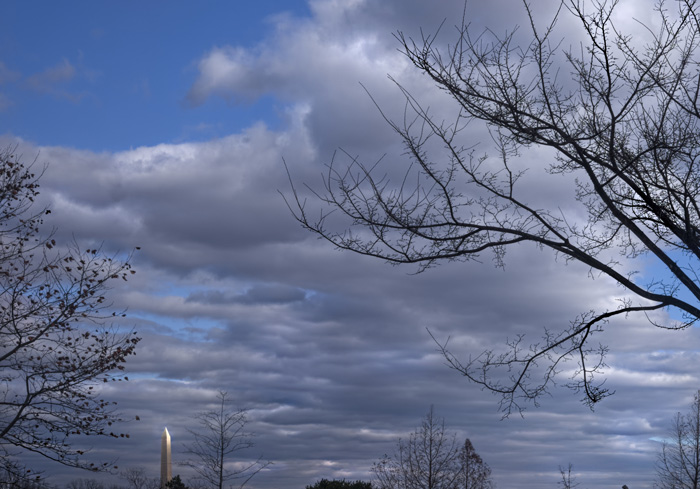 The only skyscraper in the city of Washington, as glimpsed from Arlington National Cemetery.
The only skyscraper in the city of Washington, as glimpsed from Arlington National Cemetery.
Dec 29, 2014
 The only skyscraper in the city of Washington, as glimpsed from Arlington National Cemetery.
The only skyscraper in the city of Washington, as glimpsed from Arlington National Cemetery.
Dec 30, 2014
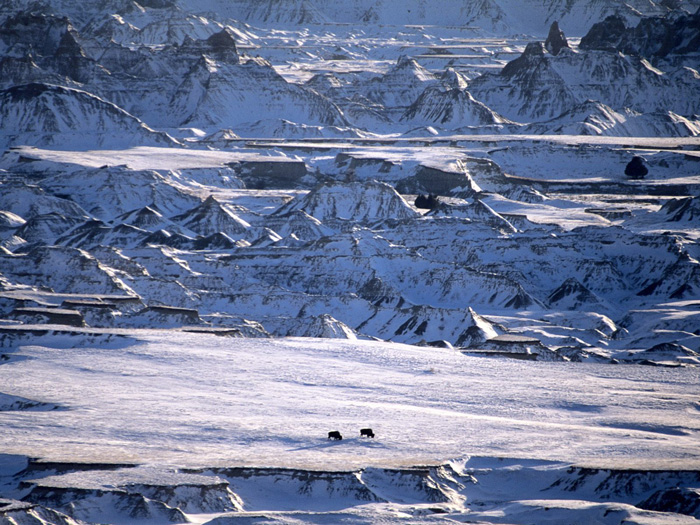 A couple of bison from the thundering herd, in winter, in Badlands National Park.
A couple of bison from the thundering herd, in winter, in Badlands National Park.
Jan 10, 2015
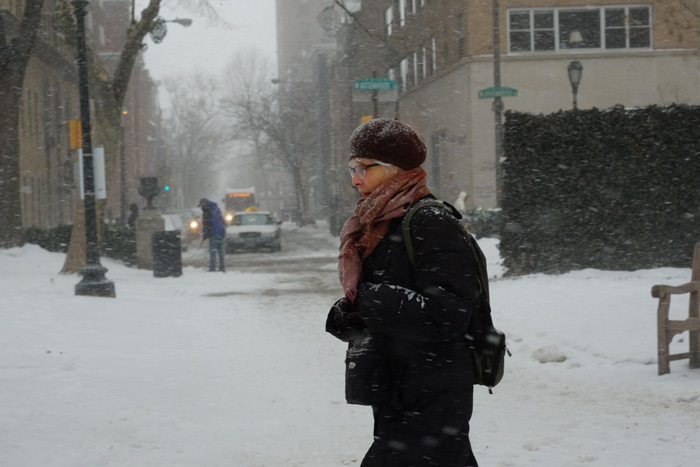 Last January, when this picture was taken, Rittenhouse Square looked plenty wintery. The snow hasn't been as deep this January, but the cold has been, if anything, even deeper. Which just goes to show, except that actually it doesn't.
Last January, when this picture was taken, Rittenhouse Square looked plenty wintery. The snow hasn't been as deep this January, but the cold has been, if anything, even deeper. Which just goes to show, except that actually it doesn't.
Jan 27, 2015
 In 1899, snow was shoveled off busy Manhattan streets, loaded into wagons, and hauled down to the docks, where it was dumped in the river.
In 1899, snow was shoveled off busy Manhattan streets, loaded into wagons, and hauled down to the docks, where it was dumped in the river.
Nowadays, the EPA doesn't like for states or municipalities to dump dirty snow from city streets into rivers or, as in the case of Portland, Maine, into the ocean. Portland used to throw its snow from downtown into the harbor, but it now builds mountains of snow, dump-truckload after dump-truckload, in an empty field near the airport.
New York City trucks its snow to melting machines, known as snow dragons, which can melt thirty tons of snow an hour and discharge the meltwater into the city sewer sytem. In an emergency, however, such as a ridiculously huge blizzard, we are told that the EPA will look the other way while the city rids its streets of snow the old-timey way.
Feb 22, 2015
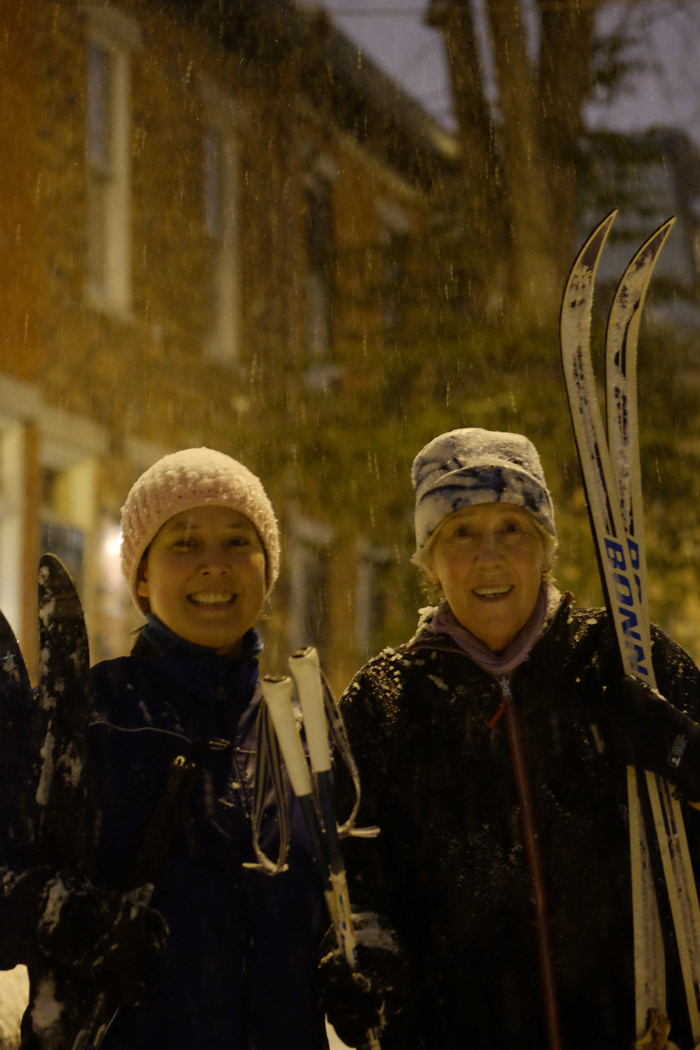 We offer a robust winter sports program here in Kater Street. See, for example.
We offer a robust winter sports program here in Kater Street. See, for example.
Apr 13, 2015
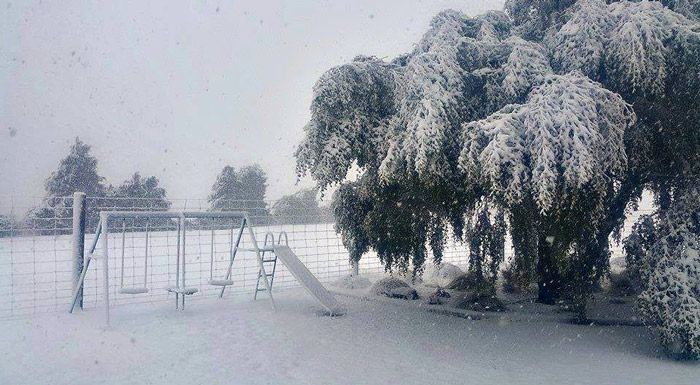 A surprise autumn cold snap attacked New Zealand's South Island this week, with deep snow burying the mountains and lighter snowfalls covering the ground at elevations as low as 100 meters above sea level. This scene was on the road between Mossburn and Te Anau, near New Zealand's southwestern coast.
A surprise autumn cold snap attacked New Zealand's South Island this week, with deep snow burying the mountains and lighter snowfalls covering the ground at elevations as low as 100 meters above sea level. This scene was on the road between Mossburn and Te Anau, near New Zealand's southwestern coast.
According to MetService meteorologist Richard Finnie, the wintry storm was like a bit of June in April: "It's not an early winter," he said, "just an early taste of winter." The cold front was expected to sweep northward across the country and then give way to more normal fall conditions within a few days.
Feb 4, 2016
 Ten or so days ago, when Philly got whacked by a pretty good thump of snow, this guy was the only one out driving around in the neighborhood, until he wasn't.
Ten or so days ago, when Philly got whacked by a pretty good thump of snow, this guy was the only one out driving around in the neighborhood, until he wasn't.
He was going the wrong way up 24th Street–and really, why not? There were no other cars on the road. But he slipped and slid, and then he was digging and digging. . . .
One of the neighbors brought him some cardboard, which was eventually helpful, but nobody offered to help him shovel, which might have made a more immediate contribution. (In our own defense, it is noted here that ever since last August, when we moved into an apartment, we no longer own a snow shovel.)
It's warmed up now and rained, and the snow is disappearing. Maybe this next month will bring us more winter, but maybe not.
Feb 9, 2016
 The 170th birthday of Claude Monet in November 2011 was marked by, among other festivities, a Photoshop competition sponsored by FreakingNews.com. The challenge was to Photoshop a composite image introducing modern elements into a Monet painting.
The 170th birthday of Claude Monet in November 2011 was marked by, among other festivities, a Photoshop competition sponsored by FreakingNews.com. The challenge was to Photoshop a composite image introducing modern elements into a Monet painting.
The winning entry, shown above, was submitted by somebody who logged into the competition as azwoodbox. That's a train à grande vitesse, imitating Monet's 1875 train below.
Feb 13, 2016
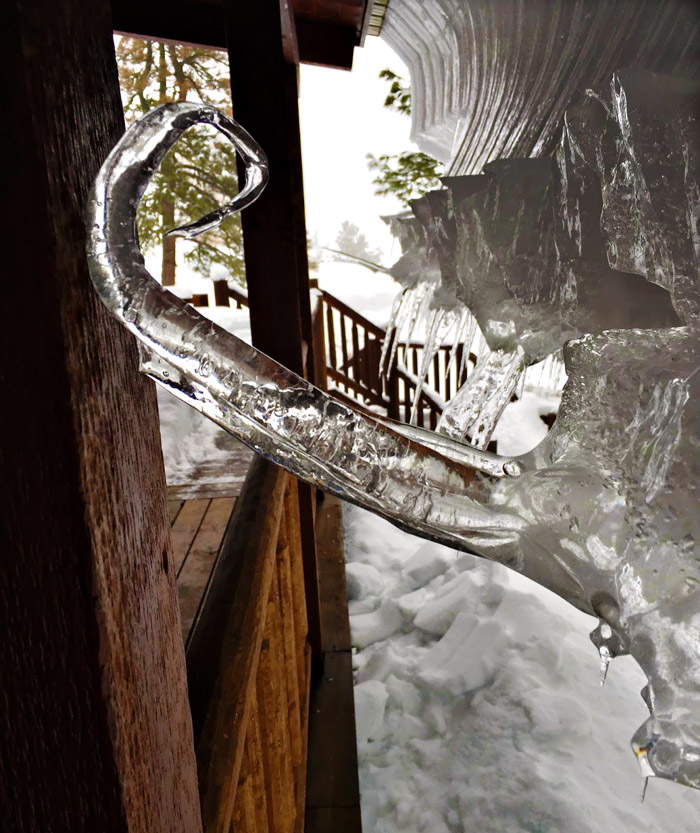 Gravitational waves–the warping of spacetime predicted by Einstein and confirmed the other day by a bunch of astrophysicists–may account for this awesome icicle hanging from a porch roof near Winthrop, Washington.
Gravitational waves–the warping of spacetime predicted by Einstein and confirmed the other day by a bunch of astrophysicists–may account for this awesome icicle hanging from a porch roof near Winthrop, Washington.
The way we understand it, which is undoubtedly not correct, the physicists measured data regarding a collision between two black holes and detected gravitational waves propagating outward from the event, kinda like sound waves rippling out from the ringing of the cosmic spacetime bell.
So. Obviously, this here icicle got caught up in some serious gravitational ripples. That, or the snow on the roof was seriously sliding and slumping and refreezing as the icicle was drippily trying to grow (see below). Hope the astrophysicists have ruled out that possible source of noise in their data.
Feb 16, 2016
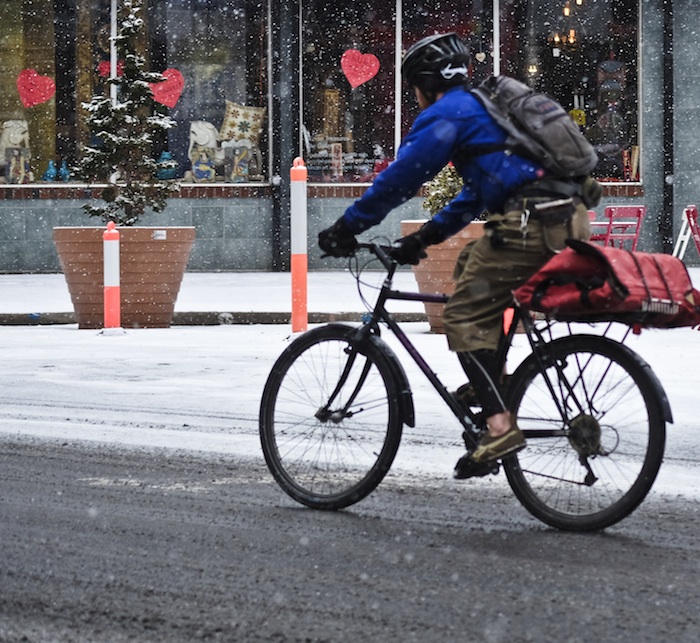 Presidents' Day has already come and gone, and they still haven't taken down the Valentine's decorations.
Presidents' Day has already come and gone, and they still haven't taken down the Valentine's decorations.
Feb 20, 2016
 This sign is posted on a fence at Eisenhower Park in East Meadow, Long Island, where Norman lived in the 1950s, when he was a little boy.
This sign is posted on a fence at Eisenhower Park in East Meadow, Long Island, where Norman lived in the 1950s, when he was a little boy.
He swears there was no such sign back then, which is probably lucky for him. Of course, he was going to run away and join the circus–he did see the movie Toby Tyler. But even as a child he suspected that he wasn't the daring kind who would fly through the air with the greatest of ease–and worse, he suspected that some of his friends probably were that daring kind, and so there would be peer pressure, and he'd feel like he had to try flying through the air, with the greatest unease.
It just could be that life's gotten a bit tougher for some of the young people growing up these days in East Meadow.
Mar 4, 2016
 In the winter of 2004, at the winter carnival in Québec City, eleven-year-old Hank met his doppelganger, the festival's mascot, Le Bonhomme. And Le Bonhomme met a little mascot of his own in smiling Hank.
In the winter of 2004, at the winter carnival in Québec City, eleven-year-old Hank met his doppelganger, the festival's mascot, Le Bonhomme. And Le Bonhomme met a little mascot of his own in smiling Hank.
Mar 5, 2016
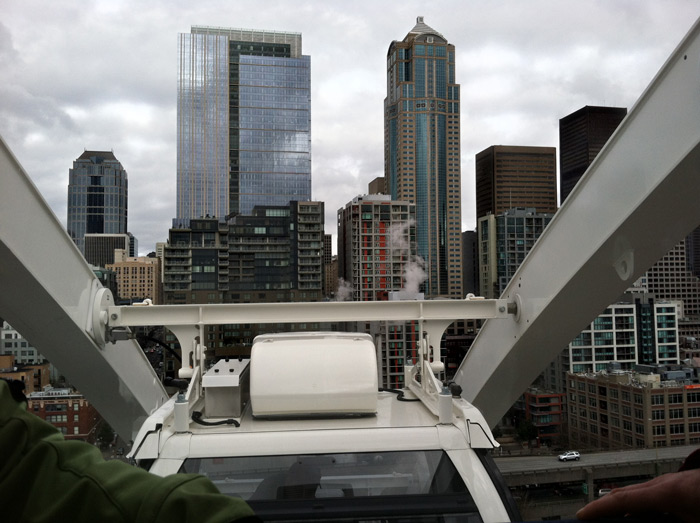 Downtown Seattle in the wintertime, as seen from the ferris wheel on the waterfront.
Downtown Seattle in the wintertime, as seen from the ferris wheel on the waterfront.
Mar 11, 2016
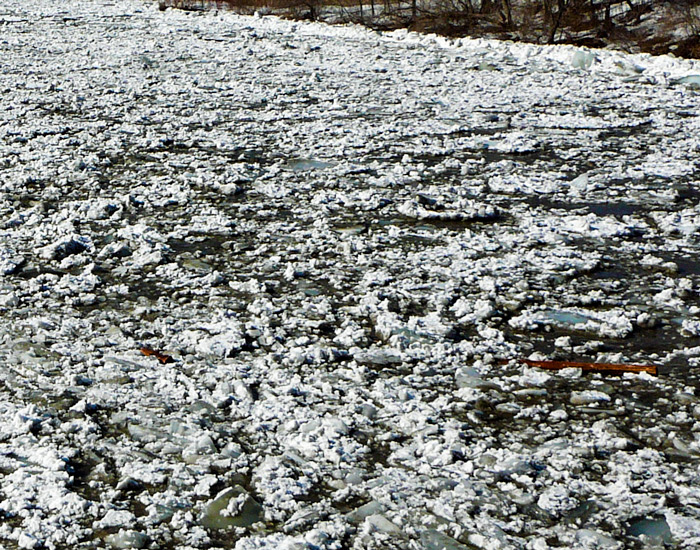 On the afternoon of March 7, 2009, the ice went out on the White River in South Royalton, Vermont. For hours, the river roared and groaned, as its thick cover of winter ice was ground to bits by rampaging ice chunks from miles upstream. By the next morning, the river ran free, except along the banks, where rocks and logs had snagged some of the frozen slabs and beached them on dry land. Over the next few weeks, the jumble of beached ice melted very slowly, and then it was really spring.
On the afternoon of March 7, 2009, the ice went out on the White River in South Royalton, Vermont. For hours, the river roared and groaned, as its thick cover of winter ice was ground to bits by rampaging ice chunks from miles upstream. By the next morning, the river ran free, except along the banks, where rocks and logs had snagged some of the frozen slabs and beached them on dry land. Over the next few weeks, the jumble of beached ice melted very slowly, and then it was really spring.
Jan 3, 2017
 In the wintertime, Franklin Falls, in the Cascade Mountains about 60 miles east of Seattle, takes on a dual personality.
In the wintertime, Franklin Falls, in the Cascade Mountains about 60 miles east of Seattle, takes on a dual personality.
The main cataract at the center of the waterfall flows too fast and furious to freeze up tight; it roars and splashes and spits spray all winter long.
But closer to the edge, the waterfall's trickles and drips crystallize as icicles, which pile up through the winter months into layercakes of glittery, frothy ice. And this year, by mid-December, the ice at Franklin Falls was ready to be climbed.
Our man of the mountains, Hank, showed up there then with his buddies and their gear: ropes, crampons, ice axes, and optimism. They were climbers who knew their way around in the mountains, who'd put in their time conquering knife-edged ridges and post-vertical cliffs and glaciers and whiteouts and whatnot.
None of them, as it turns out, had actually climbed a frozen waterfall before. But they must have seen it done on YouTube. They were pretty sure they would be able to figure it out.
And they did. We heard that it was a little bit scary but pretty fun, actually.
Jan 8, 2017
 Snow fell on Alabama the other day, and bitter cold settled in. Same thing happened there back in about 1989, when Forest Lake in Tuscaloosa froze up thick enough to run around and slide on, and our three eldest posed for a picture on the ice.
Snow fell on Alabama the other day, and bitter cold settled in. Same thing happened there back in about 1989, when Forest Lake in Tuscaloosa froze up thick enough to run around and slide on, and our three eldest posed for a picture on the ice.
From the bottom: Ted, John, Joe. Note the complete absence of gloves or mittens, and the general inadequacy of winter apparel. In his hat and jacket, Ted appeared to have a chance of staying warm, but the other two just had to tough it out. There is no evidence in this picture of the socks-on-the-hands and/or plastic-bags-in-the-shoes that we recall improvising for wintry moments in Alabama; nonetheless, they all somehow survived.
Jan 11, 2017
Jan 18, 2017
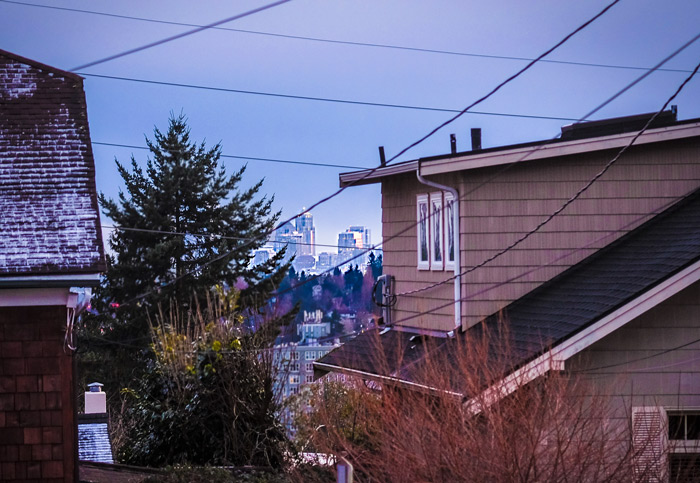 There was a leetle, teeny bit of snow in Seattle, and then a taste of sun. Fine winter days.
There was a leetle, teeny bit of snow in Seattle, and then a taste of sun. Fine winter days.
But that was then; now, the snow has melted and it's raining hard, and predictions are that it will rain forever. It's easy to see why Lewis and Clark, after they spent a long, wet winter in the Pacific Northwest, judged their entire expedition a failure; this part of the world that they'd struggled so hard to "discover" was chilly and gray and mildewy and just plain unliveable.
Feb 10, 2017

The post in the foreground marks the border between the Canadian province of Manitoba and the state of North Dakota; the farm fields in the background are in North Dakota. Last weekend, 22 refugees, mostly from Somalia, walked for miles through these fields in below-zero cold and waist-deep snow, attempting to escape the United States and find freedom in Canada.
In 2016, more than 400 refugees crossed the border here, in hopes of being granted asylum in Canada. Thousands more attempted the crossing elsewhere along the northern edge of the United States.
A common story behind this journey involves fleeing a war zone or other hellish homescape and eventually making it into the U.S., usually by way of Mexico. The refugees plead for asylum and are taken into custody; they are imprisoned for a year or more, during which time contact with their families back home is extremely limited. In fact, communication with the outside world is so limited that they find it impossible to properly prepare their asylum paperwork.
Eventually, they may be released under restrictive orders, pending an asylum decision. Their petitions are judged inadequate, their claims rejected, and they are ordered to report for deportation back to Somalia, Eritrea, Djibouti, or whatever land they had fled.
Instead, they head north. Canada and the U.S. have had a treaty since 2004 called the Safe Third Country Agreement, which basically says that refugees just get one shot at filing for asylum, either in Canada or the U.S., whichever they come to first. But the refugees argue that the U.S. isn't really a safe haven and keeps refugees locked up and unable to obtain documentation needed for their claims; Canada, they say, has a fairer system.
As long as the treaty is in effect, Canadian border agents have to turn over would-be asylum-seekers from the U.S. to U.S. agents. So the refugees can't enter Canada by road. They walk through woods or fields, or in some cases swim, across the border in between offical crossing points, and then they turn themselves in to the Royal Canadian Mounted Police.
The police call in organizations to help find housing and other support for the border-crossers. Immigrants from their homelands are contacted, to help with employment and translation. Advocate groups help with the asylum paperwork. Border towns, such as Emerson, Manitoba, the settlement closest to the fields shown here, are sometimes called on to provide emergency food and shelter.
On Christmas Eve, two men facing deportation back to Ghana, where one of them said he would be killed because he was a homosexual, paid a cab driver $400 in Grand Forks, North Dakota, to drive them to the border. The driver let them out near this field in a snowstorm, with wind chill far below zero.
For seven hours, they struggled through snowdrifts to cross the field. Only one of them had a hat; neither had gloves. When they finally crossed the border and came to a road, they spent three hours trying to flag down a passing vehicle. Finally, a truck driver stopped for them and called 911.
Both men are still in the hospital in Winnipeg, where they face amputations from severe frostbite. One has been told he will lose all his fingers and at least one toe. Still, they say, their situation is far better than it would be back in Ghana.
This refugee railroad, headed north to freedom, predates the election of Donald Trump. But there is now much greater interest in sneaking into Canada even by asylum-seekers who have not yet had their claims rejected; they fear that even if somehow they can manage to stay in the U.S., their families will never be allowed to join them.
There is also increased interest among Canadians in ending the Safe Third Country Agreement, in light of recent evidence that the U.S. can no longer be considered a safe destination for many refugees.
Mar 17, 2017
 The ferry boat Michigan Central, carrying railroad cars, prepares to enter its slip on the Detroit River, circa 1900.
The ferry boat Michigan Central, carrying railroad cars, prepares to enter its slip on the Detroit River, circa 1900.
Mar 26, 2017
 The truth is not hard to believe: these guys were in fact trying for a world record in 1893 when they loaded the sled with more than 36,000 board feet of virgin white pine logs from Ontanagon County in the Upper Peninsula of Michigan.
The truth is not hard to believe: these guys were in fact trying for a world record in 1893 when they loaded the sled with more than 36,000 board feet of virgin white pine logs from Ontanagon County in the Upper Peninsula of Michigan.
How did they pile up the load so high? The horses actually did much of the work. The men would lay each log on the ground longside the sled and affix ropes to it that went up and over the load and then back down to the ground on the other side of the sled. That's where the horses were waiting; they would be harnessed to the ropes, and as they were led away from their side of the sled, the ropes would pull the new log up to the top of the heap, guided up the side by angled tracks made from small logs. When the new log reached the top, the men would snag it into place.
How come the sled didn't just sink down in the snow? An ice road had been specially prepared, with the snow sprayed repeatedly with water and allowed to freeze rock-hard. The horses had special shoes with crampons that bit into the ice surface.
Usually, logs hauled this way were taken to a frozen river, awaiting spring, when they'd be floated downstream to a sawmill. But this particular load was pulled for just half a mile by these two horses, to a railroad siding, where the logs and the sled were loaded onto freight cars and shipped to Chicago.
There, at the Michigan pavilion of the 1893 Columbia Exhibition, the load was reassembled, sled and all, treating fairgoers to a glimpse of logging activity in what was then the world's busiest lumber region.
Did they make it into the Guinness Book of Records? We have no idea, but they did claim this was the largest load of lumber in the history of the world.
Note that most of the men here had no gloves, and of course none of them had hard hats.
Apr 21, 2017
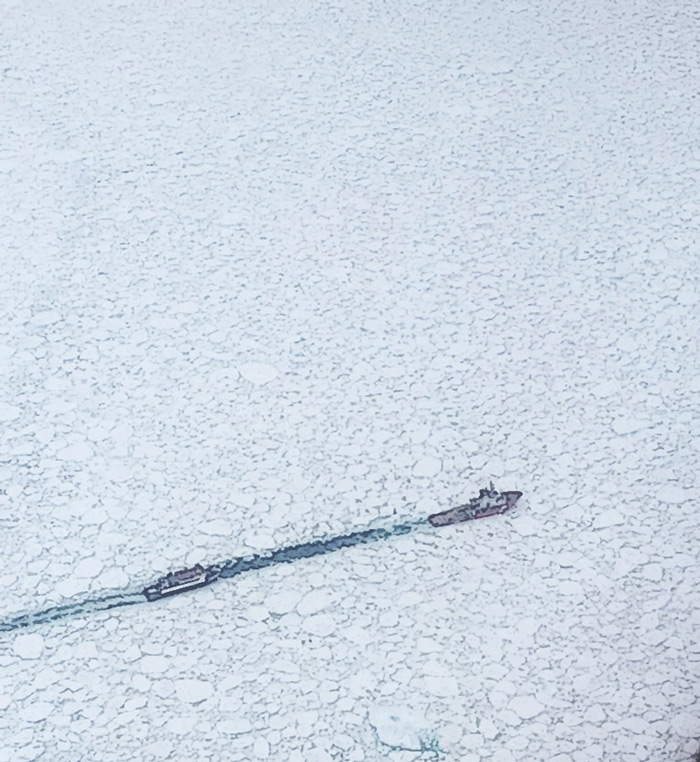 This past week, the Bell Island ferry out of Newfoundland's provincial capital of Saint John's was trapped by unusually late pack ice, requiring the ice-breaking assistance of Canadian Coast Guard vessel Earl Grey.
This past week, the Bell Island ferry out of Newfoundland's provincial capital of Saint John's was trapped by unusually late pack ice, requiring the ice-breaking assistance of Canadian Coast Guard vessel Earl Grey.
The heavy ice around Newfoundland is actually a product of global warming. Record-breaking thaws this past winter along the west coast of Greenland–including a first-ever hurricane that drenched Greenland in January–disrupted normal patterns of ice circulation on the surface of the North Atlantic.
Greenland's fast-melting glaciers spit out icebergs four months early this year, which have clogged shipping lanes. Ocean currents and winds usually break up Newfoundland's pack ice early each spring, but the unusual flow from Greenland has kept this past winter's ice trapped in harbors and coastal waters.
Jan 5, 2018
 Mabel sits and yawns on a sunny ridge near Mount Rainier last week, showing off her Happy New Year hat.
Mabel sits and yawns on a sunny ridge near Mount Rainier last week, showing off her Happy New Year hat.
Jan 6, 2018
 In the wintry weather currently gripping eastern North America, icy mounds of frozen spray, known as sugarloaves, are growing huge atop frozen rivers below not-quite-fully-frozen waterfalls. There's a sugarloaf at the base of Niagara Falls this year, and also one at Montmorency Falls near Québec City; the falls at Montmorency are some 98 feet higher than Niagara and are located almost a thousand kilometers to the northeast, in a climate zone where every winter is plenty cold enough to make a sugarloaf.
In the wintry weather currently gripping eastern North America, icy mounds of frozen spray, known as sugarloaves, are growing huge atop frozen rivers below not-quite-fully-frozen waterfalls. There's a sugarloaf at the base of Niagara Falls this year, and also one at Montmorency Falls near Québec City; the falls at Montmorency are some 98 feet higher than Niagara and are located almost a thousand kilometers to the northeast, in a climate zone where every winter is plenty cold enough to make a sugarloaf.
The painting shown above, The Ice Cone, by Robert Clow Todd, shows Montmorency Falls and its sugarloaf in the winter of 1845. The place looked pretty much the same when we visited, in the winter of 2004, minus the horses, of course.
Tall, cone-shaped things with slightly blunted tips are often called sugarloaves, especially if they are ski resorts or a mountain in Rio de Janeiro with a statue on top. That's because real, old-school sugarloaves–actual hard, solid loaves of refined sugar–were produced in molds shaped like that. Up until the end of the nineteenth century, when manufacturing processes emerged to refine sugar into a granulated product, people who could afford to buy white sugar–meaning rich people–bought it by the loaf, which might weigh as much as 30 or 35 pounds. They chipped off pieces as needed, using heavy, sharp-edged pliers known as sugar nips.
The sugarloaves pictured below are on display in the Sugar Museum in Berlin.
Jan 18, 2018
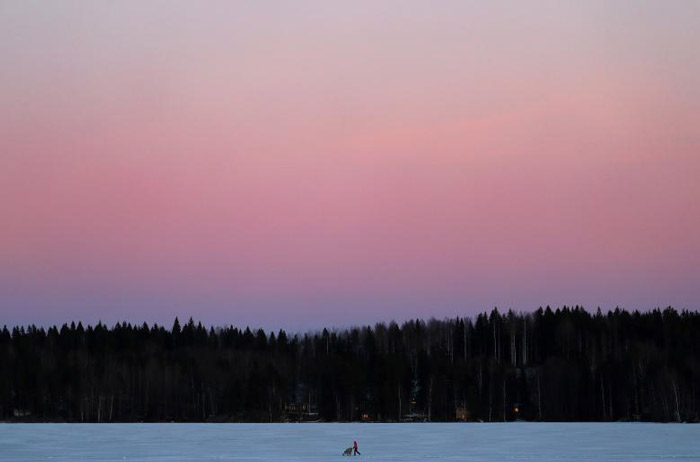 Pushing a baby stroller at sunset, across a frozen lake near Lahti, Finland.
Pushing a baby stroller at sunset, across a frozen lake near Lahti, Finland.
Mar 8, 2018
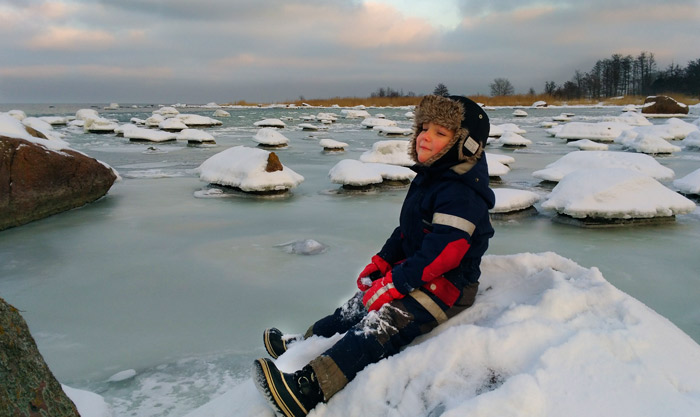 Four-year-old Rainer sits on one of the snow-covered rocks in a quiet, slushy cove at the edge of the Baltic Sea near Tallinn, Estonia.
Four-year-old Rainer sits on one of the snow-covered rocks in a quiet, slushy cove at the edge of the Baltic Sea near Tallinn, Estonia.
Mar 23, 2018

Soon.
Mar 28, 2018
 Ticket sales stopped about a week ago, but we're still looking forward to the main event: the Iron Mountain Car Plunge, when the ice on the water in the East Chapin mine pit finally gives way and the orange car sinks into the depths. At that moment, it can truly be said: spring has begun on the Upper Peninsula of Michigan.
Ticket sales stopped about a week ago, but we're still looking forward to the main event: the Iron Mountain Car Plunge, when the ice on the water in the East Chapin mine pit finally gives way and the orange car sinks into the depths. At that moment, it can truly be said: spring has begun on the Upper Peninsula of Michigan.
Tickets were three for $10–three chances to guess the day, hour, and minute of the ice-out; whoever guesses closest to the actual sinking of the car, as determined by video evidence from a webcam trained on the car on the ice, wins $1,500. The local Rotary club uses the rest of the money from ticket sales to support local organizations and events.
Ice-out raffles like this one are an old Upper Peninsula tradition, popular into the 1950s. The Iron Mountain Car Plunge was revived four years ago, using a donated 1998 Saturn stripped of its engine, battery, fluids, and anything else that might be environmentally hazardous. Students at the local technical school scrubbed the car inside and out to remove all traces of road salt and grime, and then painted it orange to attract attention. A chain on its rear axle allows it to eventually be hauled up out of the water and stored till the ice comes back next year.
The East Chapin pit looks like a good-sized lake but is actually an abandoned underground mine that collapsed in on itself and flooded.
As of this writing, the ice is still looking solid. Last year, the car did its plunge thing at 4:07 PM on April 2, 2017; in 2016, it sank in mid-April, and in 2015 in late March. For those who may be thinking about buying some chances on next year's plunge: data clearly show that the car always goes down in the late afternoon.
Below is a webcam image from right around the moment of last year's plunge.
Mar 31, 2018
 A camel is the beast of choice for hauling shepherds on their sled across the steppes of southern Siberia, near the Mongolian border.
A camel is the beast of choice for hauling shepherds on their sled across the steppes of southern Siberia, near the Mongolian border.
An estimated two million of the two-humped Bactrian camels live today throughout central Asia, most of them domesticated for work as pack animals, a job they've been doing since ancient times. Like their one-humped cousins in north Africa and the Middle East, Bactrian camels are drought-tolerant; they can also survive extreme cold and high altitude.
The shepherds riding in the sled are from the Russian Republic of Tuva, where they tend a flock of sheep and goats that must travel long distances to find good pasturage throughout the year.